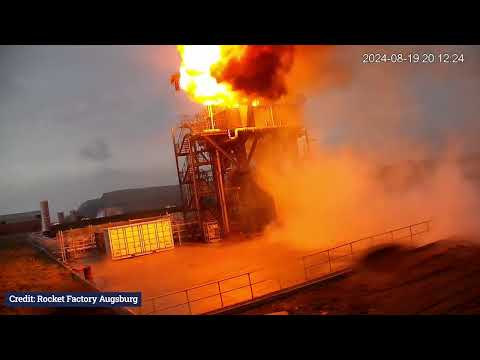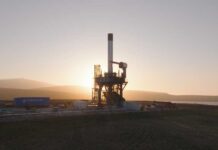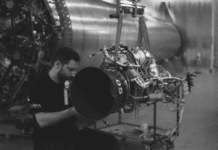
Rocket Factory Augsburg has released footage of its failed RFA ONE static fire test that resulted in the destruction of the first stage the company had planned to use for its inaugural flight into space.
The doomed RFA ONE first stage static fire test attempt took place on 19 August at the SaxaVord Spaceport in Scotland. The test was the first to feature all nine first stage Helix rocket engines. A pair of hot fire tests leading up to the 19 August test had included just four engines.
Shortly after a staggered ignition of eight of the nine engines, an anomaly occurred in one of the engines. According to a statement released by RFA on 23 August, a “fire in the oxygen pump” was identified as the root cause of the anomaly. The fire spread to neighbouring engines, with the damage cascading too quickly for any of the safety measures to deal with it effectively.
The resulting fire engulfed the entire vehicle, which collapsed under its own weight, and the wreckage exploded when it hit the ground. Fortunately, according to RFA COO Stefan Brieschenk, the vehicle tipped away from the umbilical tower, ensuring minimal damage to ground infrastructure.
In what the company described as “true RFA fashion,” it released over one and a half minutes of footage from several cameras that were observing the launchpad during the test. Brieschenk joked that the footage “cost us quite [a lot of] money to generate.”
According to Brieschenk, the company is already working on a second RFA ONE first stage, which had initially been earmarked for the rocket’s second flight. He explained that this version of the rocket’s first stage had more than 100 improvements over its predecessor. Brieschenk also revealed that the anomaly that caused the 19 August failure was “very unusual” and that the company is confident that it does not indicate any issues with the design of its Helix rocket engines.
While the company got lucky with the angle at which the rocket tipped, some damage was still done to its ground infrastructure at SaxaVord. This will need to be repaired before the company once again returns an RFA ONE first stage to the site.





